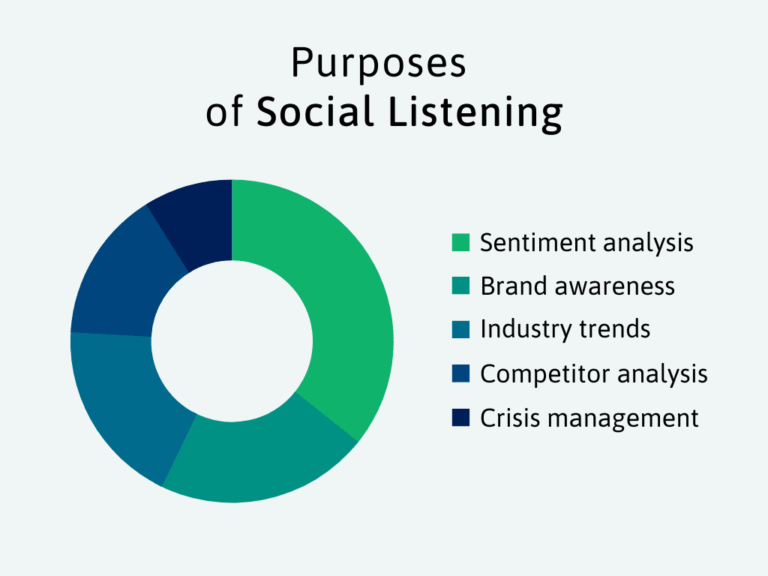Humans are known for their curiosity. This quality was the primary factor behind major discoveries and inventions. But there is a dark side to it, i.e., eavesdropping. We love to hear the secrets of others and, if possible, take advantage of them. As civilization progressed to digital media, the art of eavesdropping got a new face. In digital marketers words, it is social listening. Altogether, it is the art of monitoring and analysing online conversations and user generated content to provide valuable insights to businesses.

Social listening focuses on social media mentions, public online posts, and articles. The strategy has huge potential to understand hidden consumer needs and get consumer feedback without directly engaging them. Basically, it is one of the most popular ways to get information about your customers and competitors, helps in data driven marketing, reduce losses, and maximise profit.
However innovation is a double edged sword. There is a huge grey area surrounding social listening where marketers do not want you to know. We will tap into those details.
Data Privacy concerns
- Social listening involves gathering and analysing public content. While it can provide valuable insights, there is a risk of invading privacy and manipulating consumer behaviour. Crossing the boundaries of privacy without consent is a serious matter nowadays.
-
Have you ever had a conversation with a friend about a product, and then an ad for that item pops up? Then you are not alone. 2/3rd of British adults surveyed by YouGov in June 2021 report having had a similar experience. The incident became memefied when many people began to assume that voice-enabled home automation systems such as Amazon Alexa and Google Home were snooping on their conversations.
Data Quality Concerns
-
According to Nielsen Norman Group, only 1% of internet users actively engage in online communities. The data only reflects a small portion of the population and is likely not representative of your audience. These limitations can result in incomplete or inaccurate data, leading to skewed analysis and misguided actions.
-
Further, most social media consumers create a highly curated image of themselves online. They tailor what they put out on social media to display their best versions.
Data Bias
- Another key poit is that most social-listening software is designed for the western market. They are dependant primarily on the BIG3 platforms like Facebook, Twitter and Linkedin. This does not take into account local social media platforms like Wechat. If you only focus on the traditional ‘Big 3’ social networks (Facebook, Twitter, and LinkedIn), you’ll miss out on what’s being discussed.
- While social listening can provide valuable insights, it should not be the sole basis for decision-making. Relying too heavily on social listening data without considering other factors can lead to biased or incomplete strategies. It is important to combine social listening with other research methods for a more comprehensive understanding.
Data Context Concerns
- Analyzing online conversations requires understanding the context. Most of the GenZ know brands are after their data. So they are more likely to filter what they share online. There is a risk of misinterpreting or misrepresenting the sentiment, leading to flawed conclusions or misguided strategies.
-
For example, imagine how difficult it is for a telecom company like “Idea” to find mentions about their brand compared to a brand like “Xerox.”
Data Safety Concerns
- Social listening requires collecting and storing large chunks of data. These developments can make businesses a target for cyberattacks. If proper security measures are not in place, sensitive information could be exposed, leading to reputational damage and potential legal consequences. Additionally corporates have to spend much for data protection measures and to employ data security executives to be compliant with the local government regulations.
Data Usability Concerns
-
The art of Social listening is not a fit for businesses of all sizes. Many businesses have a low volume of social engagement. As a result, it’s hard for social-listening tools to identify and track their online presence. It may work better for B2C brands than B2B brands.
-
For instance, consumers love sharing opinions about beauty, food, and luxury products. However, nobody talks much about software and technology, professional services, or industrial machinery.
Data Misuse
- Data is the new oil in thw 21st century. But, Social listening can reveal information about competitors strategies, product developments, or customer feedback. The practice can be challenging for small business from going beyond their egg shell. It can invite legal battles against business malpractice.

In Shorts
Social listening can be a great tool. There are online companies like Awario and Onclusive that provide social listening services. There is no doubt that It can generate leads and drive conversions with ease. But the risks associated with the services are overwhelming. These can range from personal freedom related risks to matters of corporate ethics.
This is just a beginning. Above all, it is important for businesses to use this tool responsibly and transparently, ensuring that user consent and data protection are prioritised. Organisations should establish clear policies and guidelines for social listening, including privacy and data protection measures. Also they should invest in robust cybersecurity measures, train analysts on proper data interpretation, and cross-validate social listening data with other research methods to ensure accuracy and reliability.